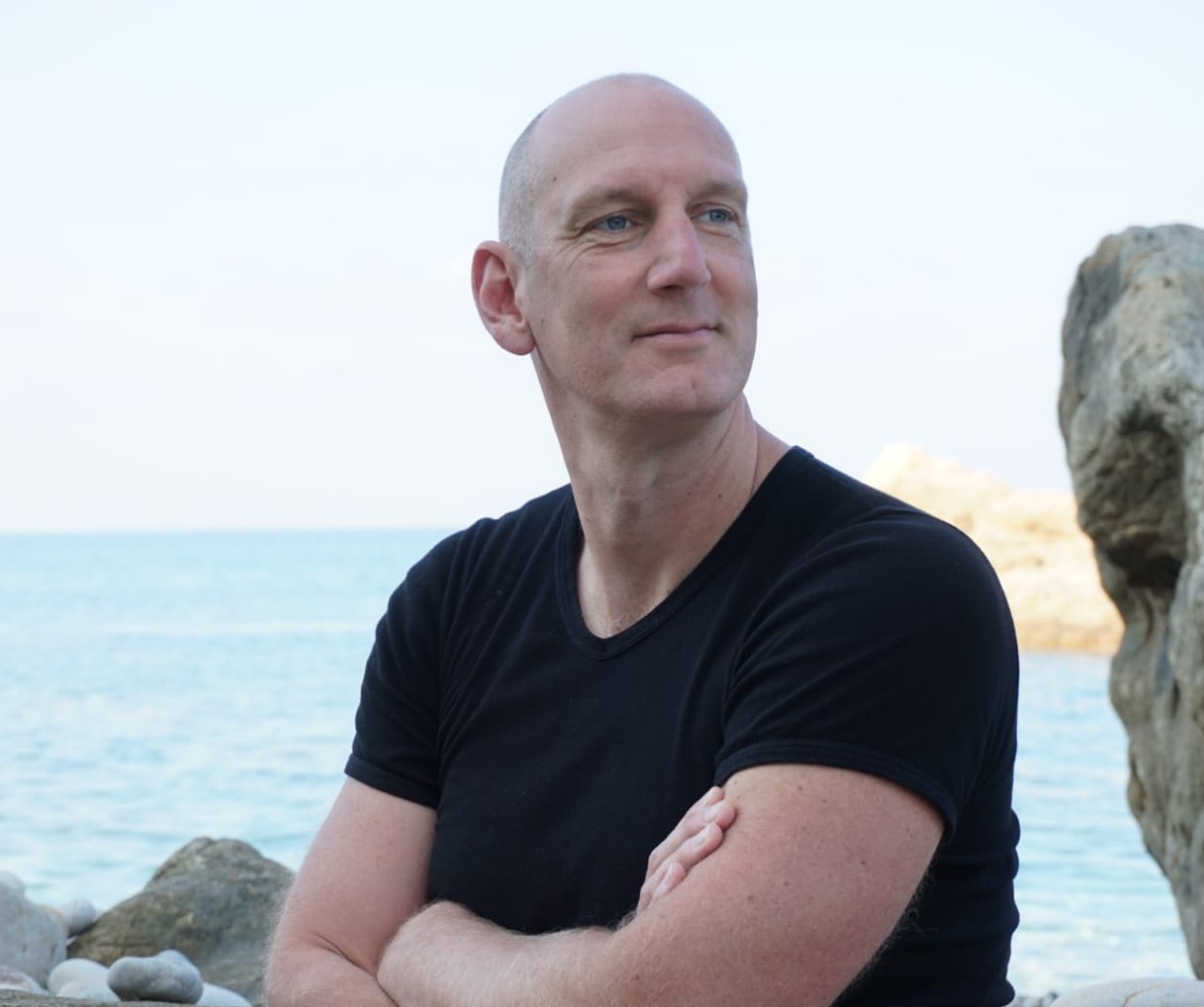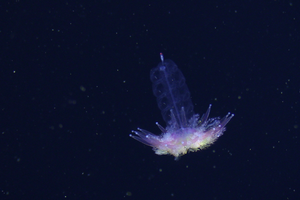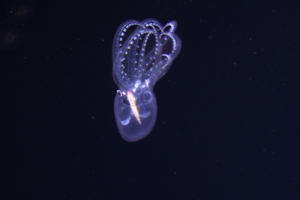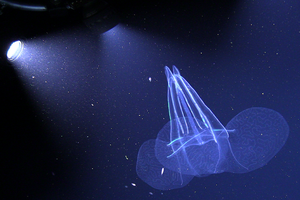Office:
Room: 1.509
Phone: +49-431 600-4566
E-Mail: hhoving(at)geomar.de
Address:
Wischhofstr. 1-3
D-24148 Kiel
Germany
Career / Education
2022-heute Working group leader 'Deep Sea Biology'
2017-2022 Head of the Emmy Noether Junior Research Group 'The role of pelagic foodfalls in subsidizing deep-sea bottom communities in a changing ocean'
2013-2017 Future Ocean Postdoctoral fellow at GEOMAR – Helmholtz Centre for Ocean Research, Kiel, Germany.
2010-2013 Postdoctoral Fellow Monterey Bay Aquarium Research Institute (MBARI), Moss Landing, California, USA.
2009-2010 Honours College Coordinator, Faculty of Mathematics and Natural Sciences, University of Groningen, the Netherlands.
2008-2009 Lecturer (in Marine Biology and Invertebrate Zoology), Department of Ocean Ecosystems, Faculty of Mathematics and Natural Sciences, University of Groningen, the Netherlands.
2008 PhD Biology, University of Groningen, the Netherlands.
2002 MSc Biology, specialisation Marine Biology, University of Groningen, the Netherlands.
Scientific Interest
Henk-Jan Hoving leads the deep-sea biology working group, which is focused on life histories (growth and reproduction), biodiversity, and foodweb ecology of deep-sea organisms, with emphasis on cephalopods and gelatinous zooplankton.
One specific objective of his working group is to understand the role of medium size pelagic fauna (squid, fish and gelatinous plankton) in subsidizing deep-sea benthic communities and the biological carbon pump. In this effort we document biodiversity and distribution of pelagic communities to identify potential foodfall species, quantify contributions of medium size foodfalls to deep-sea carbon budgets, and investigate how scavenging communities and rates differ between region and depth.
The working group also investigates how pelagic fauna are adapted to a life in the deep sea with emphasis on growth, reproduction and feeding strategies. This helps to understand and predict the ability of pelagic and deep-sea organisms to cope with climate change and environmental impacts.
Awards and Funding
- Emmy Noether Junior Research Group awarded by the German Research Foundation
- Postdoctoral Fellowship from the Cluster of Excellence 'Future Ocean', funded by the German Research Foundation
- Postdoctoral Fellowship of the Monterey bay Aquarium Research Institute funded by the David and Lucile Packard Foundation
- Rubicon Postdoctoral Fellowship awarded by the Netherlands Organization for Scientific Research
Memberships, Community and Editorial Functions
- 2020 Associate Editor Marine Biology
- 2019 Reviewer for DFG grant proposals
- 2019 Thesis examiner Rhodes University, South Africa
- 2013-2018 Member of the Cluster of Excellence ‘Future Ocean’
- 2016-present Associate Editor Deep-Sea Research Part I: Oceanographic Research Papers.
- 2015-present Editorial Board Member of Scientific Reports Nature Publishing Group
- 2013 PhD examiner for Melbourne University, Australia
- 2006-present Provided referee reports on manuscript submissions for 25 scientific journals.
- Since 2019 Invited member of the Helmholtz Pelagic Optics Initiative
- Since 2019 Member of the American Society for Limnology and Oceanography
- Since 2018 Invited member of the GEOMAR Technology and Logistics Council (“Beirat”)
- Since 2017 Member of the Deep-Sea Biology Society
- Since 2015 Collaborator in the SFB 754 "Climate-Biogeochemistry Interactions in the Tropical Ocean"
- Since 2015 Member of the Climate Change Working Group in the Deep Ocean Stewardship Initiative
- Since 2012 Elected council member of the Cephalopod International Advisory Council
Expeditions
Research cruises of the last 5 years (total 30 multiday cruises; > 360 days)
2024 R/V Maria S. Merian MSM126, 26 days, Madeira. ROV PHOCA, Observational tools, nets, eDNA sampling multibeam mapping. Chief scientists: Dierking and Hoving
2024 R/V Meteor M202, 10 days, Azores, Observational tools, nets, eDNA sampling multibeam mapping. Chief scientists: Merten and Hoving
2022 R/V Heincke HE605, 28 days, Experiments stressors Themisto abyssorum for iAtlantic, Chief scientist Dr Henk-Jan Hoving & Charlotte Havermans
2019 R/V Western Flyer, 7 days MBARI Midwater Ecology Expedition Monterey Bay. Chief scientist Dr. BH Robison
2019 R/V Polarstern PS121, 35 days, ancillary user project CARCASS investigating the role of plankton and nekton in the biological carbon pump using deep-sea landers, PELAGIOS, Multinet, CTD and eDNA collection. Chief Scientist Dr. K Metfies (AWI)
2019 R/V Poseidon POS532, 21 days investigating the role of gelatinous zooplankton in the biological carbon pump in Cape Verde waters, manned submersible JAGO, PELAGIOS, Multinet, CTD and eDNA collection. Chief Scientist Dr. HJT Hoving
Selected Publications
Hoving HJT, F. Visser (2024) Whales and squid in a deep-sea arms race. Limnology and Oceanography Letters 9, 165–171 https://doi.org/10.1002/lol2.10391
Hoving HJT, Haddock S, Robison, BH, Seibel, B (2024) Giant eggs in a deep-sea squid. Ecology 105(7):e4319. https://doi.org/10.1002/ecy.4319
Burford BP, Wild LA, Schwarz R, Bowers A, Chenoweth E, Sreenivasan A, Elahi R, Gilly WF, Heintz RA, Field JC, Hoving H.J.T., Straley J & Denny MW (2022) Rapid range expansion of a marine ectotherm reveals the demographic and ecological consequences of short-term variability in seawater temperature and dissolved oxygen. American Naturalist https://doi.org/10.1086/718575
Hoving H.J.T. and Freitas R (2021) Pelagic observations of the Midwater scorpionfish Ectreposebastes imus (Setarchidae) suggests a role in trophic coupling between deep-sea habitats. Journal of Fish Biology 100 (2): 586-589 https://doi.org/10.1111/jfb.14944
Merten, V., Bayer, T., Reusch, TBH., Puebla, O., Fuss, J., Stefanschitz, J., Lischka, A., Hauss, H., Neitzel, P., Piatkowski, U., Czudaj, S., Christiansen, B., Denda, A., Hoving, H.J.T. (2021) An Integrative Assessment Combining Deep-Sea Net Sampling, in situ Observations and Environmental DNA Analysis Identifies Cabo Verde as a Cephalopod Biodiversity Hotspot in the Atlantic Ocean. Frontiers in Marine Science https://doi.org/10.3389/fmars.2021.760108
Stenvers, V.I., Hauss, H., Osborn, K.J., Philipp Neitzel P., Merten V.J., Scheer S., Robison B.H., Freitas R., Hoving H.J.T. (2021) Distribution, associations and role in the biological carbon pump of Pyrosoma atlanticum (Tunicata, Thaliacea) off Cabo Verde, NE Atlantic. Scientific Reports https://doi.org/10.1038/s41598-021-88208-5
F. Visser*, V. J. Merten*, T. Bayer, M. G. Oudejans, D. S. W. de Jonge, O. Puebla, T. B. H. Reusch, J. Fuss, H.J.T. Hoving (2021) Deep-sea predator niche segregation revealed by combined cetacean biologging and eDNA analysis of cephalopod prey. Science Advances doi: 10.1126/sciadv.abf5908, https://advances.sciencemag.org/content/7/14/eabf5908. *equal contribution
Hoving, H.J.T., Neitzel, P., Hauss, H., Christiansen, S., Kiko, R., Robison, B.H., Silva, P, and Körtzinger, A. (2020) In situ observations show vertical community structure of pelagic fauna in the eastern tropical North Atlantic off Cape Verde. Scientific Reports 10:21798 doi.org/10.1038/s41598-020-78255-9
Lischka, A, Lacoue-Labarthe, T, Bustamante, P, Piatkowski, U, Hoving HJT. (2020) Trace elements in the boreoatlantic gonate squid (Gonatus fabricii) demonstrate its ecological key role in polar regions of the Atlantic Ocean. Environmental Pollution 256: 113389 https://doi.org/10.1016/j.envpol.2019.113389
Hoving, HJT, Christiansen, S, Fabrizius, E, Hauss, H, Kiko, R, Linke, P, Neitzel, P, Piatkowski, U. and Körtzinger, A. (2019) The Pelagic In situ Observation System (PELAGIOS) to reveal biodiversity, behavior and ecology of elusive oceanic fauna. Ocean Science 15 (5) 1327-1340 doi.org/10.5194/os-2018-131.
Christiansen, S*, Hoving, HJT*, Schütte, F, Hauss, H, Karstensen, H, Körtzinger, A, Schröder, S, Stemmann, L, Christiansen, B, Picheral M, Brandt, P, Robison, BH, Koch, R, Kiko, R. (2018) Particulate matter flux interception in oceanic mesoscale eddies by the polychaete Poeobius sp. Limnology and Oceanography https://doi.org/10.1002/lno.10926 *equal contribution
Schwarz, R, Piatkowski, U, Hoving, HJT. (2018) The impact of environmental temperature on the lifespan of octopods. Marine ecology Progress Series 605: 151-164
Hoving HJT, Bush SL, Haddock SHD, Robison BH. (2017) Bathyal feasting: post-spawning squid as a source of carbon for deep-sea benthic communities. Proc. R. Soc. B 284: 20172096
Purser A, Marcon Y, Hoving, HJT, Vecchione M, Piatkowski U, Easone D. Bluhm H, Boetius A. (2016). Association of deep-sea incirrate octopods with manganese crusts and nodule fields in the Pacific Ocean. Current Biology Volume 26 (24), 1268-1269
Hoving HJT, Laptikhovsky VV, Robison BH. (2015). Vampire squid’s reproductive strategy is unique among coleoid cephalopods. Current Biology 25 (8): 322–323






